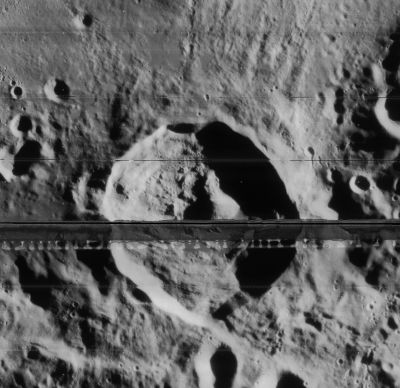Rutherfurd
Contents
- 1 Rutherfurd
- 2 Table of Contents
- 2.1 Images
- 2.2 Maps
- 2.3 Description
- 2.4 Description: Wikipedia
- 2.5 Additional Information
- 2.6 The very smooth looking spot with the arc-shaped row of skylights, just north-northeast of Rutherfurd
- 2.7 Giant boulder of perhaps more than 500 meter diameter on the south-southwestern part of Rutherfurd's floor
- 2.8 Nomenclature
- 2.9 LPOD Articles
- 2.10 Bibliography
Rutherfurd
|
Lat: 60.9°S, Long: 12.1°W, Diam: 51 km, Depth: km, Rükl: 72, Copernican |
Table of Contents
[#Rutherfurd Rutherfurd]
[#Rutherfurd-Images Images]
[#Rutherfurd-Maps Maps]
[#Rutherfurd-Description Description]
[#Rutherfurd-Description: Wikipedia Description: Wikipedia]
[#Rutherfurd-Additional Information Additional Information]
[#Rutherfurd-The very smooth looking spot with the arc-shaped row of skylights, just north-northeast of Rutherfurd The very smooth looking spot with the arc-shaped row of skylights, just north-northeast of Rutherfurd]
[#Rutherfurd-Giant boulder of perhaps more than 500 meter diameter on the south-southwestern part of Rutherfurd's floor Giant boulder of perhaps more than 500 meter diameter on the south-southwestern part of Rutherfurd's floor]
[#Rutherfurd-Nomenclature Nomenclature]
[#Rutherfurd-LPOD Articles LPOD Articles]
[#Rutherfurd-Bibliography Bibliography]

Lunar Orbiter IV-118-h3
Images
LPOD Photo Gallery Lunar Orbiter Images
Maps
Description
Description: Wikipedia
Additional Information
- Radar bright at 70 cm.
- Has small impact melt pond on south rim and spash areas slightly further south. See Lunar Orbiter IV-118-h3 above (click for large view). - tychocrater tychocrater Aug 5, 2007. What are spash areas? - DannyCaes DannyCaes Aug 8, 2015
- Exterior impact melt deposits most extensive to NNW, max of ~30 km beyond rim. Most extensive ejecta, rays and secondary craters to the NNE, with max wall slumping on SSW side of crater, and topographically lowest rim crest to N (Hawke and Head, 1977).
- Included in ALPO list of bright ray craters
- TSI = 30, CPI = 10, FI = 20; MI =60 Smith and Sanchez, 1973
The very smooth looking spot with the arc-shaped row of skylights, just north-northeast of Rutherfurd
There's a very smooth looking spot just north-northeast of Rutherfurd. I could be wrong but it must be a tiny mare-like region.
In this (more-or-less circle shaped, or disc shaped) spot there's an arc shaped arrangement of tiny skylight-like depressions, or... perhaps they are just several fragments of a common crevasse?
The exact location of this smooth spot is: LATITUDE: -60.23 / LONGITUDE: -11.88 (as it appears on the LROC ACT-REACT QUICK MAP).
The arc shaped arrangement of the skylight-like depressions is on the eastern part of the smooth spot.
Discovered by D.Caes on Sunday the 21st of January 2018.
Note:
On the farside of the moon, west-southwest of Chandler, there's a whole region of this sort of smooth looking spots. The LROC team calls them Highland Ponds.
- DannyCaes DannyCaes Jan 21, 2018
Are those skylight-like depressions in the smooth spot north-northeast of Rutherfurd perhaps Irregular Mare Patches? (IMPs).
Giant boulder of perhaps more than 500 meter diameter on the south-southwestern part of Rutherfurd's floor
Indeed it is a behemoth! The maximum "zoom" view of the NAC at the location of that boulder (see the LROC ACT-REACT QUICK MAP) shows very well the many cracks in it.
It must be a spectacular sight to stand near the base of one of the faces of it (standing in the boulder's shadow), while looking up at the boulder's top which is obscuring the sun (a perfect view of the sun's corona!).
The pinpoint location of that boulder is: LATITUDE: -61.66 / LONGITUDE: -12.83
- DannyCaes DannyCaes Jan 21, 2018
Note: the Equidistant Cylindrical view (in the ACT-REACT QUICK MAP) shows a diameter of more than 500 meters, while the Orthographic South Pole view shows the same boulder as something of 300 meters... (now, what is the boulder's true diameter?).
Nomenclature
- Named for Lewis Morris Rutherfurd (November 25, 1816 – May 30, 1892), an American lawyer and astronomer. He abandoned his study of law in 1849 to dedicate his leisure to science, particularly astronomy. He performed pioneering work in spectral analysis, and experimented with celestial photography. He invented instruments for his studies, including the micrometer for measuring photographs, a machine for producing improved ruled diffraction gratings, and the first telescope designed specifically for astrophotography. Rutherfurd's lunar photgraphs were much admired in his day, and he is sometimes listed as a co-author of Richard Proctor's The Moon, for which they were used as illustrations. Proctor referred to Rutherfurd as "the greatest lunar photographer of the age."
- According to Whitaker (p. 150), this name was introduced on a map published by Gaudibert and Fenet in 1887. Although all three of the authorities in Mary Blaggs Collated List (1913) had referred to this crater as Clavius a, the IAU adopted Gaudibert's name as part of the original nomenclature in its Named Lunar Formations (1935).
- Don't confuse this Rutherfurd with the Rutherford on the farside. This is another blunder made by the IAU! - tychocrater tychocrater Jul 13, 2007
LPOD Articles
Bibliography
This page has been edited 1 times. The last modification was made by - tychocrater tychocrater on Jun 13, 2009 3:24 pm - afx3u2